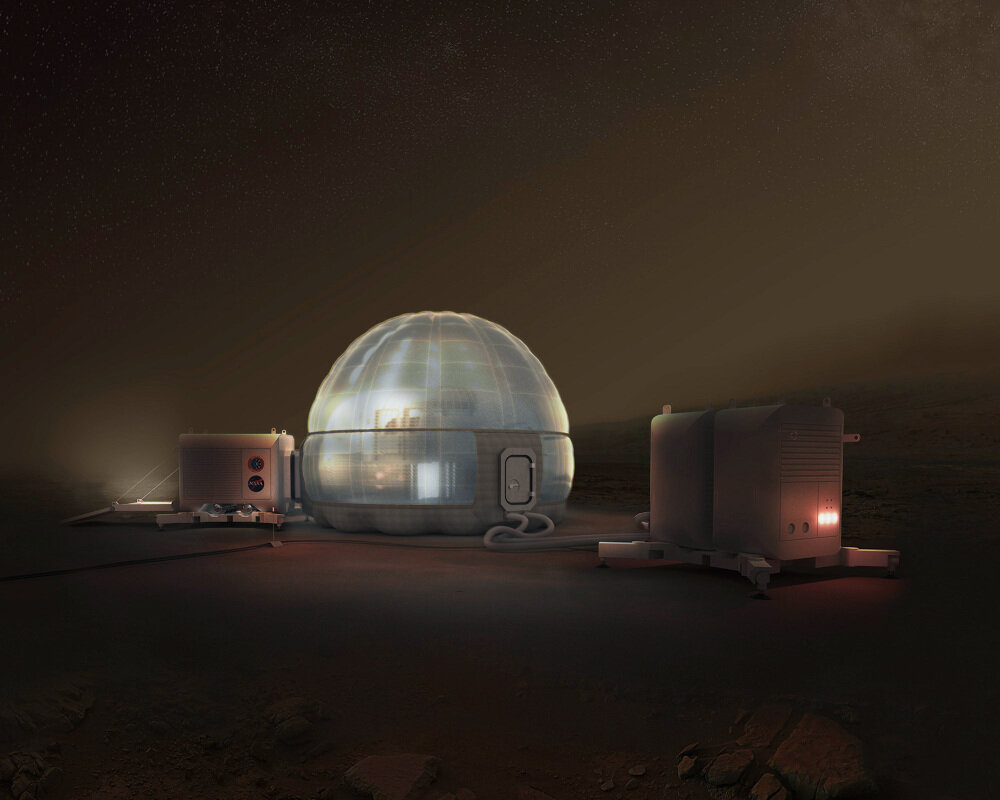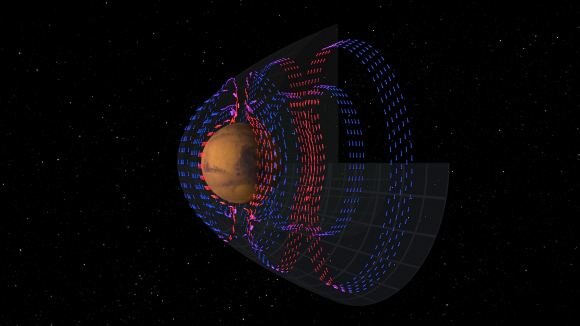Scientists investigated which material available to Martian expeditions would be better protected from radiation. They tested Martian rocks, aluminum, plastics and water ice. The last one turned out to be the best option.

What will protect astronauts on Mars from radiation
Scientists from the Blue Marble Space Institute of Science decided to check which material available for Mars would better protect people and equipment that arrive there from radiation. For this purpose, they created an electronic model of the human body located under the protective layer that forms the wall of the Martian base and the conditions on the other side.
An article published in Acta Astronautica examines which of the materials prevents human damage by radiation. The best of what will be on the red planet, according to scientists, will be water ice. It contains a lot of hydrogen ions, which are good at trapping high-energy particles. It is it that is proposed as the main material for the protection of the Martian base.
Martian regolith also proved to be quite effective, although it is inferior to water. It is proposed to produce an additional protective layer from it. But aluminum has shown a very moderate ability to delay radiation. However, unlike previous materials, it can be used to make load-bearing structures.
Aluminum can be extracted relatively easily from the most Martian rocks, so it can not be transported from Earth. There is also enough carbon in the soil of the red planet for the manufacture of plastics and composites based on them, but these materials practically do not delay radiation.
Why radiation on Mars is a difficult issue
Both the United States and China have announced that they plan to send humans to Mars in the next decade. However, the red planet is very unfriendly to human health. In particular, the situation with practically no magnetic field remains problematic, which cannot protect it from radiation.

Because of this, on a celestial body that is farther from the Sun than the Earth in a year, one can get a dose of 244 millisieverts, which is much more than the 6-7 that we get on Earth. It is not known definitively whether this planet is seismically dead. If it is not possible to activate the bowels of Mars, we will have to rely on anti-radiation materials, as well as on the Moon. And they should be somewhat unusual.
On Earth, in such cases, we rely on something very dense, such as lead and steel. However, it is impossible to transport these materials from Earth in sufficient quantities, and it is difficult to extract them on the spot. So we have to figure out how to protect the Martian city with the materials that are not designed for this.
According to phys.org
Follow us on Twitter to get the most interesting space news in time
https://twitter.com/ust_magazine

